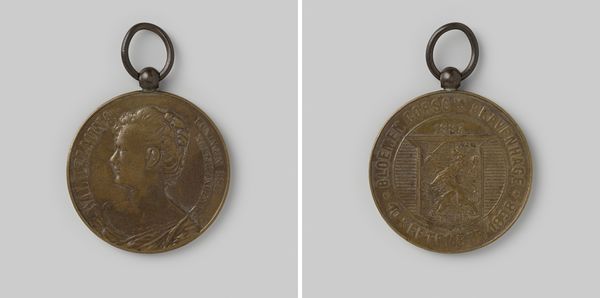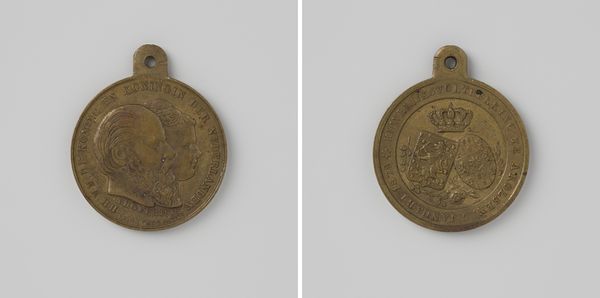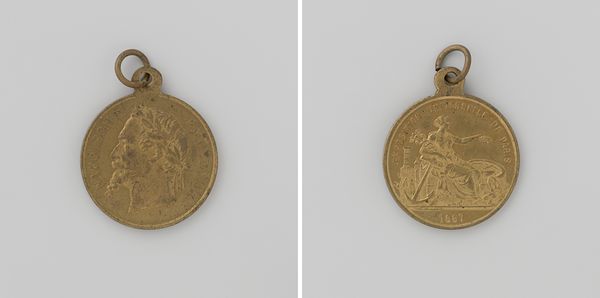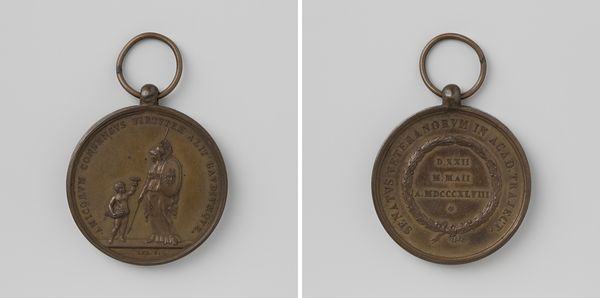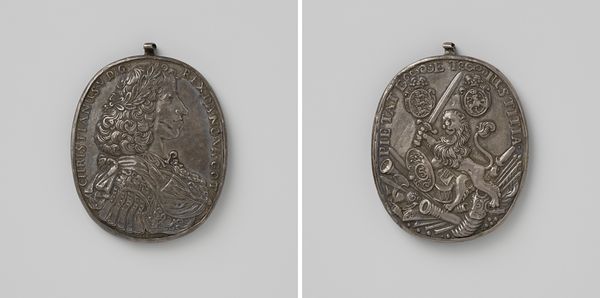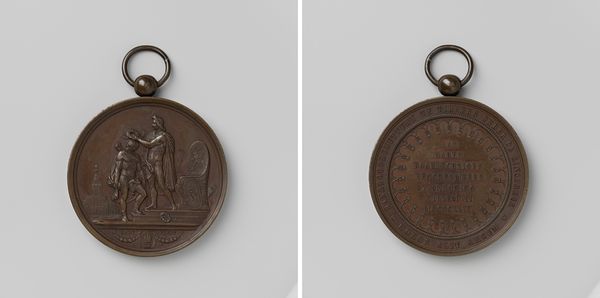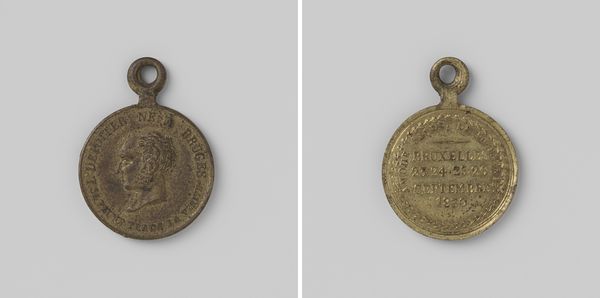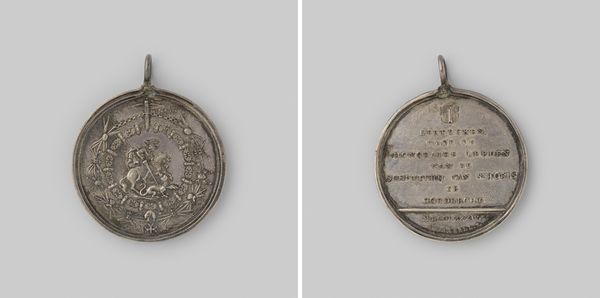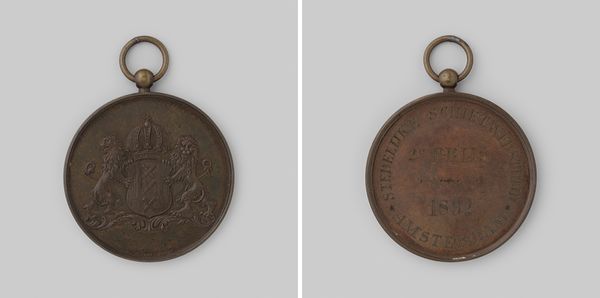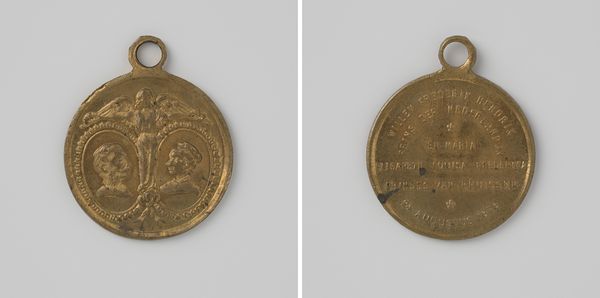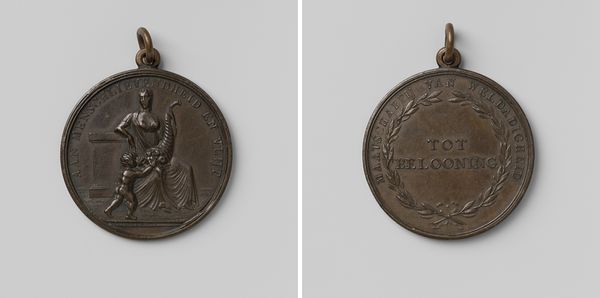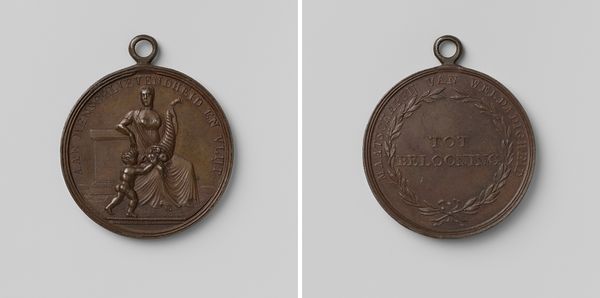
Gevecht bij Soestdijk, draagteken door de Staten van Utrecht uitgereikt aan de officieren 1787 - 1788
0:00
0:00
metal, relief, sculpture, engraving
#
portrait
#
neoclacissism
#
metal
#
relief
#
sculpture
#
history-painting
#
engraving
Dimensions: length 6.2 cm, length 5.4 cm, length 5.1 cm, width 4.4 cm, weight 324 gr
Copyright: Rijks Museum: Open Domain
Curator: Here we have a look at "Battle near Soestdijk, a badge presented by the States of Utrecht to the officers," dating from 1787 to 1788, by Johan George Holtzhey. It’s currently held at the Rijksmuseum. What's your first take? Editor: The neoclassical imagery feels heavily gendered. We have this militaristic female figure and a banner text focused entirely on officers, it speaks volumes about who gets commemorated. Curator: The medal’s Neoclassical style emphasizes the idealized figure and recalls historical precedents of valuing masculine sacrifice. This badge exemplifies how images of military prowess have been constructed to reinforce specific social hierarchies. Editor: Exactly. Consider the sociopolitical context: This commemorative object valorizes a specific version of national pride in a moment of political tension. It prompts one to ask who these celebrations are really for, and whose sacrifices aren’t acknowledged? Curator: These badges were created and given out as a means to cement the legitimacy and bravery of these particular officers after this event. The creation of a tangible and beautiful medal also communicates an air of nobility that other documentation couldn't. Editor: I find that use of historical allegories always works to conceal just as much as they reveal. When we reflect on the stories such emblems suppress, or rather choose to rewrite, this is how we recognize both whose interests it served and who it fails to serve. Curator: Holtzhey, through this piece, offers us insight into the mindset and desires of a late 18th-century governing power grappling with a challenging and contested era. Editor: To engage with art, we must continually explore both its implicit as well as explicit purposes and intentions, seeing what ideologies it helps fortify and whether those ideologies work for everyone. Curator: Thank you for providing such insight. Editor: Likewise.
Comments
No comments
Be the first to comment and join the conversation on the ultimate creative platform.

